The
Temple of Sobek and Haroeris in Kom Ombo (also known simply as
Kom Ombo Temple)
dates from about 180 BC during the Ptolemaic era, with additions made
into Roman times. It stands right on the bank of the Nile between Edfu and Aswan, making it a convenient stop for river cruises.
HistoryIn ancient times,
Kom Ombo stood on an important
crossroads between the caravan route from Nubia and trails from the
gold mines in the eastern desert. During the reign of Ptolemy VI
Philometor (180-145 BC), it became a training depot for African
war elephants, which were used to fight the fierce pachyderms of the Seleucid empire.
The temple at Kom Ombo was also built at this time, under Ptolemy VI. Since this bend in the Nile was a favored spot for
crocodilesto bask in the sun and threaten locals, it is natural that the temple
would be dedicated to Sobek, the crocodile god. But it is unusual in
having a double dedication: it also honors Haroeris, a form of the
falcon-headed god Horus.
The hypostyle halls were added under Ptolemy XIII (51-47 BC); the Roman emperor
Trajan (53-117 AD) added the forecourt and outer enclosure walls.
Today, Kom Ombo is home to many
Nubians who were
displaced from their ancestral homes by the rise of Lake Nasser caused
by Aswan Dam. Tourism is not the only industry in Kom Ombo: sugar cane
is harvested on the river banks and there are felucca-building yards
here.
What to SeeThe Kom Ombo Temple is unusual in that it is a
double temple,
with one side dedicated to the god Haroesis and the other side to
Sobek. The design is almost perfectly symmetrical, with two
side-by-side sanctuaries and two parallel passageways leading through
the outer parts of the temple.
The right side is dedicated to
Sobek-Re (the crocodile god combined with the sun god Re), along with his wife (a form of Hathor) and their son
Khonsu-Hor.
Sobek is associated with Seth, the enemy of Horus. In the myth of Horus
and Osiris, Seth and his followers changed themselves into crocodiles
to escape. The ancient Egyptians believed that by honoring the fearsome
crocodile as a god, they would be safe from attacks.
The left side is dedicated to
Haroeris, the "Good Doctor" (a form of the falcon-headed god Horus the Elder) along with his consort
Ta-Sent-Nefer, the "Good Sister" (another form of Hathor).
Entrance to the temple complex is via the
Gate of Neos Dionysos,
only half of which still stands. Its date is not certain, since
scholars different on which Ptolemy should be identified with the title
of Neos Dionysos. But the general consensus is that he is Ptolemy XII
(81-50 BC), the father of Cleopatra.
Like other Egyptian temples, Kom Ombo had a great
pylon, but this was washed away by the Nile long ago. Most of the
forecourt is gone as well, with only low walls and stumps of pillars remaining. This section was added in the Roman era under Trajan.
The main sight at Kom Ombo is the beautiful
Outer Hypostyle Hall,
with 15 thick columns topped with floral capitals and a cornice
decorated with carved winged sun-discs. The bases of the columns bear
the heraldic lily of Upper Egypt and the papyrus symbol of the Nile
Delta. Significant portions of the roof remain, which are decorated
with flying vultures and astronomical imagery.
On the outer wall on the left, Neos Dionysos is shown being purified
by Thoth and Horus; on the right a similar scene occurs in the presence
of Sobek (whose face has been destroyed).
On the inner wall on the right (east) are especially fine carvings
of Neos Dionysos being crowned before Haroeris, Sobek (patrons of the
temple), Wadjet and Nekhbet (the goddess of the north and south).
The west side of the inner wall has Neos Dionysos appearing before
Isis, Horus the Elder, and a lion-headed god. In the back of the hall,
the king makes offerings to the same deities.
The
Inner Hypostyle Hall is older and has 10
slender columns. There is a relief of Sobek in his snake form on the
south wall between the portals; in the southwest corner, Ptolemy II
receives the sword of victory (
hps) from Haroeris in the
presence of the king's wife and sister. Ptolemy II is also shown making
offerings to various gods on the shafts of the columns, while his elder
brother makes offerings to Haroeris a the back of the hall. Between the
back doors is a hieroglyphic list of temple deities and festivals.
Beyond the hypostyle halls are three successive
vestibules,
rectangular and roofless, decorated by Ptolemy VI. The first vestibule
contains reliefs showing the foundation of the temple with Sheshat
(goddess of writing) making measurements (on the left back wall) and
offerings and libations to Sobek (right back wall).
The second vestibule is the
Hall of Offerings; only
priests were admitted here. The chamber on the right was used to store
vestments and sacred texts. Reliefs on the southern wall include
offerings to Haroeris (east), a women giving birth (center) and a
description of the temple and dedication to Sobek (west).
Through a wide single doorway from the Hall of Offerings are the
doorsto the parallel sanctuaries. On the wall in between the doors is a
relief of Ptolemy, wearing a Macedonian cloak, and his wife being
presented with a palm stalk with a sign representing the years of his
reign. The gods present are Sobek's son Khonsu (wearing a blue crescent
and red disc), Haroeris and Sobek.
Little remains of the
sanctuaries themselves, but this allows a glimpse of the
secret corridorbetween them. It is thought that the priest would speak for the gods
from here. The corridor's entrance is through a underground crypt in
the central shrine in the northern inner corridor.
The
outer corridor between the Ptolemaic temple and the Roman enclosure wall bears reliefs including
Marcus Aureliusoffering a pectoral to Ta-Sent-Nefer, the Good Sister and wife of
Haroeris (back left) and depictions of surgical tools (to the right of
Aurelius), which are quite sophisticated for 2,000 years ago.
Worth visiting in the temple grounds is the
Sacred Walljust west of the Outer Hypostyle Hall. This large round well has two
stairways descending to its depths and was used as a Nilometer: priests
would calculate taxes for the year by measuring the depth of the Nile.
A
small pool nearby was used for raising sacred crocodiles. In the Chapel of Hathor near the entrance are three
crocodile mummies, which were uncovered during nearby roadworks in the 1970s.
The
Birth House of Ptolemy VII was mostly washed away by the Nile in the 19th century, but a doorway remains intact. See the Edfu Temple
for an example of a surviving birth house, which was an element unique
to Ptolemaic temples. A few faint reliefs can still be seen, including
one showing Ptolemy IX and two gods in a papyrus thicket, observed by
an ithyphallic Min-Amun-Re holding lettuce (symbolizing fertility).
Location Map Location map and satellite view of the
Temple of Kom Ombo.
Using the buttons on the left, zoom in for a closer look or zoom out to
get your bearings. Click and drag the map to move around.




































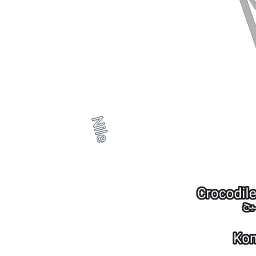


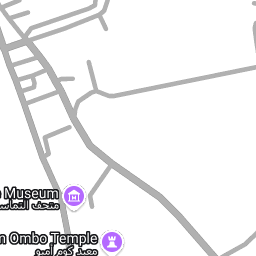
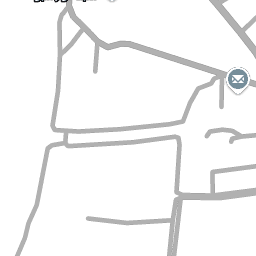
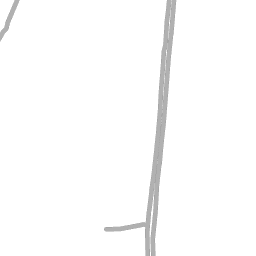
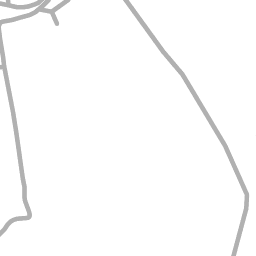
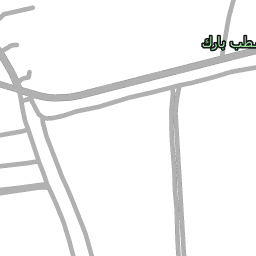
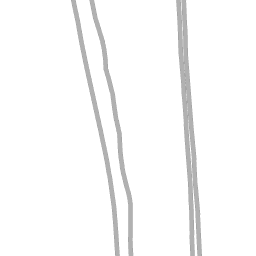
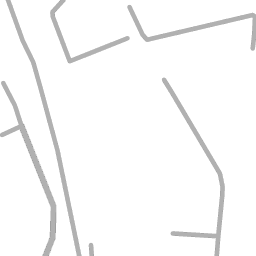
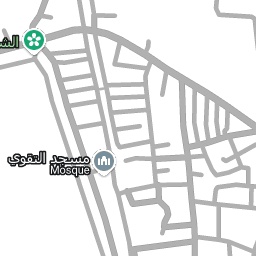
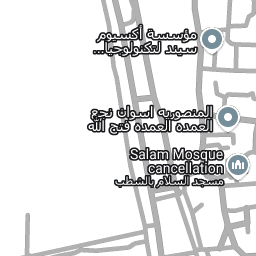



























Imagery  2009 DigitalGlobe, Cnes/Spot Image, GeoEye, Map data
2009 DigitalGlobe, Cnes/Spot Image, GeoEye, Map data  2009 ORION-ME, AND, Europa Technologies - Terms of Use
2009 ORION-ME, AND, Europa Technologies - Terms of Use 
Map
Satellite
Hybrid
Quick Facts| Names: | Kom Ombo Temple; Temple of Kom Ombo; Temple of Sobek and Haroeris; Temple of Haroeris and Sobek |
| Type of site: | Egyptian cult temple |
| Dates: | c.180 BC - 14 AD (Ptolemaic era with Roman additions) |
| Location: | 4km from the town of Kom Ombo on the River Nile, 45k m N of Aswan |
| Hours: | Daily 7am-5pm |
| Cost: | £E20 |
Article Sources
- The Rough Guide to Egypt 6 (November 2005).
- Ptolemies - Livius.org
- Ptolemy XII Neos Dionysos - Egyptian Pharoahs

Detailed map of Kom Ombo with satellite imagery. Click to enlarge.

Forecourt and Hypostyle Hall of Kom Ombo.
Photo  Sebastià Giralt.
Sebastià Giralt.See these and many more photos in our
Kom Ombo Photo Gallery.

Relief of Horus and Sobek, honorees of the temple.
Photo  Alex Kaos.
Alex Kaos.
Capitals and cornice of the Outer Hypostyle Hall.
Photo  Carolyn.
Carolyn.
Kom Ombo Temple and its tourist bazaar.
Photo  Dave Cross.
Dave Cross.
The Sacred Well and a side view of the temple. From right is
the Outer
Hypostyle Hall, the Inner Hypostyle Hall, and three vestibules leading
to the sanctuaries.
Photo  Elevated.
Elevated.
What's left of the Roman-era forecourt.
Photo  Gareth and Rebekah.
Gareth and Rebekah.
Columns and ceiling in the Hypostyle Hall.
Photo  Gerry Vandermaesen.
Gerry Vandermaesen.
Vultures against a blue background on the ceiling, representing the sky.
Photo  Trevor Lowe.
Trevor Lowe.
Ruins of Kom Ombo Temple.
Photo  Trevor Lowe.
Trevor Lowe.

Views through the vestibules and of a stone pedestal, which probably
supported a cult image.
Photos by Yuen-Ping and Colin Meddings.
Mummified crocodiles on display at Kom Ombo.
Photo  Endlisnis.
Endlisnis.